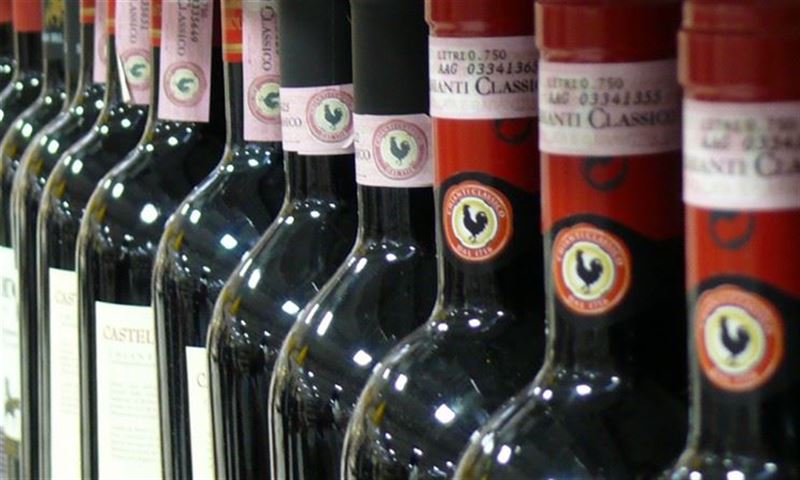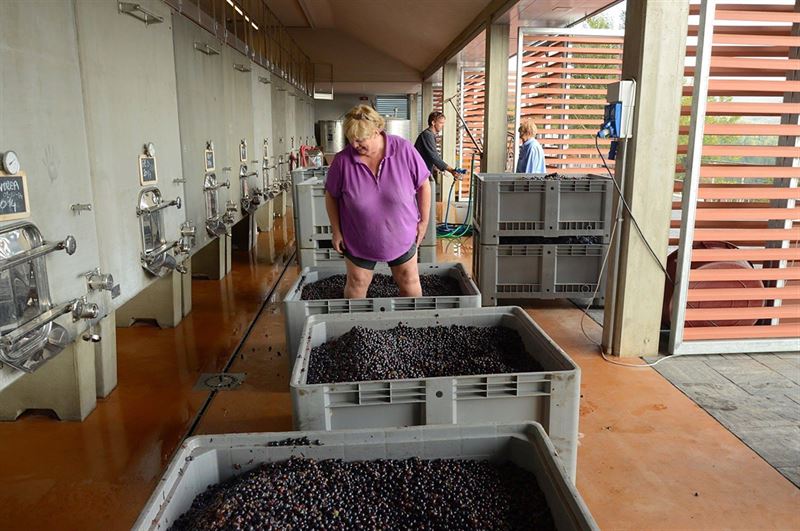Tuscany has a rich history of viticulture. Its rolling hills and Mediterranean climate provide the perfect conditions for the production of good-quality wines. The region is particularly renowned for its red wines, most of which are produced from Sangiovese grapes. These reds are generally spicy, with good acid levels, smooth texture and medium body.
The most exclusive Sangiovese wine is the high-quality Brunello di Montalcino, from a fortress town south of Siena. It is one of Italy’s most expensive wines and is now issued under more than 100 different labels. This wine is produced solely from Sangiovese grapes and takes at least 10 years to reach maturity. Other Sangiovese wines include Chianti and Chianti Classico. But unlike Brunello di Montalcino, these also contain a small amount (between 10 and 15 per cent) of Cabernet Sauvignon, Merlot and Syrah grapes.
Chianti Classico comes from the vineyards that lie between Florence and Siena, with the towns of Greve, Radda and Castellina forming a triangle in the very heart of the Chianti area. Most of these wines belong to the Classico’s marketing consortium and bear the Gallo Nero symbol, a black rooster, the symbol of an authentic bottle of Chianti Classico. Two kinds of Chianti Classico are available, Standard and Riserva. Standard is labelled with a Gallo Nero surrounded by a red border, whereas Riserva is labelled with a Gallo Nero surrounded by a gold border. Riservas are produced from some of the finest grapes and aged for a minimum of 27 months to provide an additional full-bodied flavour.
Many Chianti wines also hold the DOC/DOCG (Dominazione di Origine Controllato/ Dominazione di Origine Controllato e Guarantita) status. This Italian quality-assurance label was introduced in 1963 by the Italian government and amended in 1992 by the EU law for the Protected Designation of Origin. To meet the DOC/DOCG requirements wines must be produced within the specified region using defined methods and must also meet a defined quality standard.
Since the 1970s more modern wines have emerged, made from international grape varieties and using French barriques, or barrels. These are the Super Tuscans. Grapes such as Cabernet Sauvignon and Merlot were introduced and mixed with the classic Sangiovese to produce other high-quality wines but at a much lower cost due to modern techniques. But these avant garde methods did not fit the new DOC/DOCG laws and the wines were forced to take the humble label of Vini da Tavola, or table wine. Over time, these wines have gained a reputation as some of the finest ever made in Italy and their prices are well above those charged for an ordinary table wine.
And last, but not least, there’s Grappa.Grappa, or grape stalk, is a grape-based pomace brandy (between 37.5 and 60 per cent alcohol) made from grape seeds, stalks and stems left over from winemaking after pressing. This by-product of Italian wine can either be taken on its own or added as a shot to an espresso coffee, generally taken after meals to aid digestion.
Tuscany Wines
-

-

Join the Vendemmia
The best time of year to visit Tuscany is during the September harvest or just before to see the vines bowing under the weight of the ripening Sangiovese grapes.
During autumn you can join in the great Tuscan grape harvest with the locals. The Vendemmia is an important cultural event in which the winegrowers celebrate the hard work they have put into the crops by meeting, eating and tasting each other’s wines. The Vendemmia generally takes place in September, however the exact time changes year on year depending on the climate and the related maturity of the grapes.
If you want to experience the Vendemmia the best way is to join the grape-pickers for a day. The harvest begins at sunrise, but early rising and hard work will be rewarded by a generous lunch of prosciutto ham, cheeses and of course, Tuscan wine.
-
Chianti wine trail: Florence to Siena
The Chiantigiana (or simply the SR 222), the road connecting Florence to Siena, is one of the most beautiful driving routes in Italy, passing acre upon acre of vineyards producing the world-famous Chianti Classico DOCG.
Chianti has been one of Italy’s most important wine-producing regions for more than three centuries. It was here that the family of the Grand Duke of Tuscany began cultivating grapes during the 18th and 19th centuries in the region that would become modern Chianti.
The Chianti wine route
You could be forgiven for thinking the Chianti wine trail was a straight path or circular route; instead, you will drive a series of zigzags. Don’t despair though, your efforts will be thoroughly rewarded with enchanting Tuscan countryside views, charming medieval towns and, of course, delicious wines for sampling.
For a truly inspiring tour of the Chiantigiana, make time to visit at least some of the ancient towns along the way and call by the vineyards. Most wineries are open to the public but double-check before you visit to avoid disappointment.
Here are some of our favourites:
Greve in Chianti
Castello di Verrazzano
Tel: +39 055 854243
Web: www.verrazzano.com
Vignamaggio
Tel: +39 055 854661
Web: www.vignamaggio.com
Panzano in Chianti
Le Fonti
Tel: +39 055 852194
Web: www.fattorialefonti.it
Fattoria Montagliari
Tel: +39 055 85 20 14
Web: www.montagliari.it
Castellina in Chianti
Gagliole
Tel: +39 0577 740 369
Web: www.gagliole.com
Villa Trasqua
Tel: +39 0577 74 30 75
Web: www.villatrasqua.it
Radda in Chianti
Volpaia
Web: www.volpaia.com
Castello di Albola
Web: www.albola.it
Gaiole in Chianti
Castello di Brolio
Tel: +39 0577 730220
Web: www.ricasoli.it
Casanuova di Ama
Tel: +39 0577 746119
Web: www.agrariacasanuovadiama.it
For more information about these towns and the best things to do, visit their individual pages in our Travel Guide. -
Wine and art at Castello di Ama
Serious wine buffs shouldn’t miss a trip to one of Chianti’s premier wine-producing estates, Castello di Ama. You could spend a whole afternoon here visiting the vineyards and cellars and sipping wines – the Chianti Classico Vigneto La Casuccia and Vigneto Bellavista are world-renowned.
But don’t miss the extraordinary contemporary art collection that’s also on display, with works by such luminaries as Louise Bourgeois and Anish Kapoor.
Address: Castello di Ama, Località Ama, SP Traversa del Chianti, 53013 Gaiole (SI)
Tel: +39 0577 746069
Web: www.castellodiama.com -
Places to Stay near the Chianti Wine Trail
To truly make the most of the Chianti wine trail and immerse yourself amongst the vineyards and wineries, why not stay at a local private villa? We are lucky enough to offer a collection of beautiful villas right in the heart of the Chianti area ranging from one-bedroom romantic retreats to extravagant properties large enough to accommodate the entire family.
Explore our collection of Chianti villas here.














